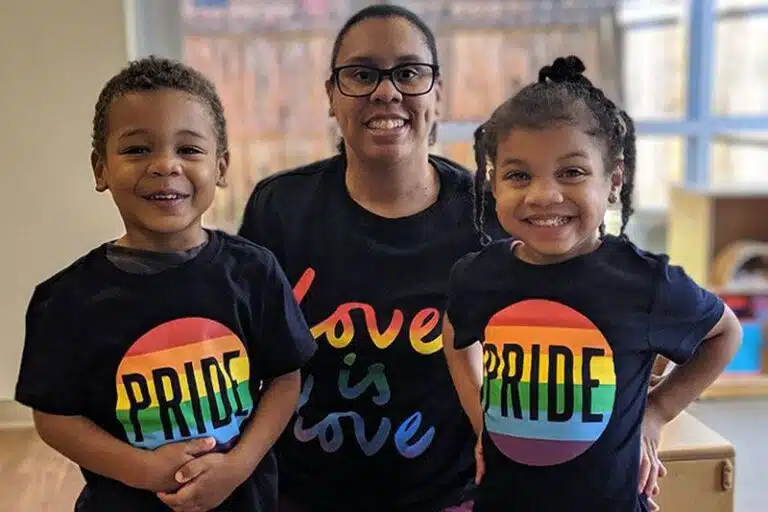In an era where child protection is paramount, the role of a Designated Safeguarding Lead (DSL) has never been more critical. Whether you’re a school teacher, nursery manager, youth worker, or healthcare professional, ensuring the safety of children and young people falls heavily on your shoulders. But what exactly is Designated Safeguarding Lead Training Level 3, and why is it essential for anyone stepping into this vital position?
As a leading UK-based online training provider, Skilltopia has helped over 867 professionals gain the confidence and compliance needed for safeguarding roles. Our CPD-accredited Designated Safeguarding Lead Training Level 3 course, priced at just £30 + VAT, equips you with the advanced skills required to protect vulnerable children effectively. In this comprehensive guide, we’ll break down what this training entails, who needs it, and why investing in it could be the best decision for your career and organisation.

What Is a Designated Safeguarding Lead (DSL)?
Before diving into the training, let’s clarify the role. A Designated Safeguarding Lead (DSL), also known as a Designated Safeguarding Officer (DSO) in some contexts, is the senior staff member responsible for managing safeguarding concerns in organisations that work with children and young people. This includes schools, nurseries, sports clubs, charities, and healthcare settings.
According to the Department for Education’s Keeping Children Safe in Education (KCSIE) 2023 guidance, every educational establishment must appoint a DSL who acts as the first point of contact for child protection issues. The DSL’s duties include:
- Coordinating safeguarding responses.
- Liaising with external agencies like children’s social care.
- Ensuring staff are trained and aware of procedures.
- Maintaining accurate records of concerns.
In non-educational settings, the role aligns with Working Together to Safeguard Children (2023), emphasising multi-agency collaboration to prevent abuse, neglect, and exploitation. Without proper training, DSLs risk missing vital signs of harm, leading to serious consequences for children and legal repercussions for organisations.
What Is Designated Safeguarding Lead Training Level 3?
Designated Safeguarding Lead Training Level 3 is an advanced, CPD-accredited qualification designed specifically for individuals taking on the DSL role. Unlike Level 1 (basic awareness) or Level 2 (intermediate handling), Level 3 focuses on leadership and strategic responsibilities, providing the depth needed to navigate complex safeguarding scenarios.
Our Skilltopia course, for instance, is a fully online, 3-hour programme that covers statutory requirements under UK legislation. It’s RoSPA-assured and CPD-certified, ensuring it meets national standards for professional development. Key elements include:
- Legislation and Guidance: In-depth exploration of the Children Act 1989, Working Together to Safeguard Children, and KCSIE.
- Recognising Risks: Identifying signs of abuse, neglect, online grooming, and exploitation, including vulnerabilities like disability or cultural barriers.
- Practical Response: Step-by-step guidance on handling disclosures, making referrals, and escalating concerns.
- Multi-Agency Working: Best practices for collaborating with social care, police, and health services.
- Safer Recruitment and Audits: Tools for vetting staff, managing allegations, and conducting safeguarding reviews.
Delivered through interactive modules with real-life case studies, the training builds practical confidence. Upon completion, you’ll receive an instant digital certificate, recognised by employers and regulators across the UK. Printed certificates arrive the next working day via Royal Mail.
At Skilltopia, we’ve designed this Level 3 Safeguarding Children course to be accessible on any device—desktop, tablet, or mobile—with progress saving so you can learn at your own pace. No formal prerequisites are needed, though prior Level 1 or 2 knowledge is recommended.
Why Do You Need Designated Safeguarding Lead Training Level 3?
The “why” boils down to three core pillars: legal compliance, professional confidence, and organisational impact. Let’s explore each.
1. Meeting Statutory Requirements
UK law mandates that DSLs receive appropriate training. KCSIE states that DSLs must undergo training at appointment and refresher training every two years. Similarly, Working Together to Safeguard Children emphasises ongoing development for effective child protection.
Failure to comply can result in Ofsted downgrades for schools, regulatory action for nurseries, or even personal liability in serious case reviews (e.g., the Victoria Climbié inquiry highlighted inadequate DSL training). By completing Designated Safeguarding Lead Training Level 3, you ensure your organisation stays aligned with these obligations, avoiding fines or reputational damage.
2. Building Confidence in High-Stakes Situations
Safeguarding isn’t theoretical—it’s about real-time decisions that can save lives. Level 3 training equips you with the tools to:
- Respond calmly to a child’s disclosure of abuse.
- Navigate the Prevent Duty to address radicalisation risks.
- Lead whistleblowing processes for staff allegations.
One of our learners, Sarah from a Bristol primary school, shared: “Skilltopia’s DSL training gave me the clarity I needed to handle a neglect concern confidently. The case studies were spot-on, and the CPD certificate impressed my governors.”
Without this level of training, DSLs often feel overwhelmed, leading to delayed referrals or inconsistent practices.
3. Enhancing Organisational Safeguarding Culture
A well-trained DSL fosters a proactive environment where safeguarding is everyone’s responsibility. This training covers auditing policies, staff supervision, and creating awareness campaigns—essential for embedding a “culture of safety.”
For businesses like youth clubs or charities, it means better multi-agency partnerships, reducing isolation in complex cases. Ultimately, it protects children while safeguarding your organisation’s reputation and operations.
Who Should Take Designated Safeguarding Lead Training Level 3?
This training is ideal for:
- Education Professionals: Headteachers, teachers, and support staff in schools or colleges.
- Early Years Practitioners: Nursery managers, childminders, and preschool leaders.
- Youth and Community Workers: Sports coaches, activity leaders, and charity coordinators.
- Healthcare and Social Care Staff: Nurses, social workers, and family support officers.
- Anyone Appointed as DSL/DSO: Including deputies who may step up.
No prior qualifications are required, making it accessible for career changers or promotions. It’s particularly valuable in voluntary roles where formal training is often overlooked.
How Skilltopia’s Designated Safeguarding Lead Training Level 3 Stands Out
At Skilltopia, we go beyond compliance—we empower you. Our course is:
- Affordable: Just £30 + VAT, with bulk discounts (10% off for 10+ courses).
- Flexible: 100% online, 3 hours, with immediate access and unlimited exam attempts.
- Trusted: CPD-accredited by The CPD Certification Service and RoSPA-assured, with 867+ satisfied learners.
- Practical: Full audio narration, device compatibility, and instant certificates.
As a Bristol-based provider, we understand the pressures of UK safeguarding roles. Our modules draw from real-world expertise, ensuring you’re prepared for inspections and emergencies.
Frequently Asked Questions (FAQs)
What is the difference between a Designated Safeguarding Lead and a Designated Safeguarding Officer?
The terms are often used interchangeably, but DSL is more common in education (KCSIE), while DSO applies broadly to non-educational settings. Both require Level 3 training for leadership roles.
Is Designated Safeguarding Lead Training Level 3 mandatory?
Yes, for appointed DSLs in schools and similar settings, per statutory guidance. Refresher training is required every two years.
How long does Level 3 Safeguarding Children training take?
Our course is approximately 3 hours, but you can pause and resume anytime.
Does the course include a certificate?
Yes, an instant CPD-accredited digital certificate is provided upon completion, with printed options available.
Can I access the training on mobile?
Absolutely—our platform works seamlessly on desktops, tablets, and mobiles.
Ready to Become a Confident Designated Safeguarding Lead?
Don’t leave child protection to chance. With Designated Safeguarding Lead Training Level 3 from Skilltopia, you’ll gain the knowledge, skills, and certification to lead effectively—all for £30 + VAT.
Enrol in Designated Safeguarding Lead Training Level 3 Today and take the first step towards safeguarding excellence.


